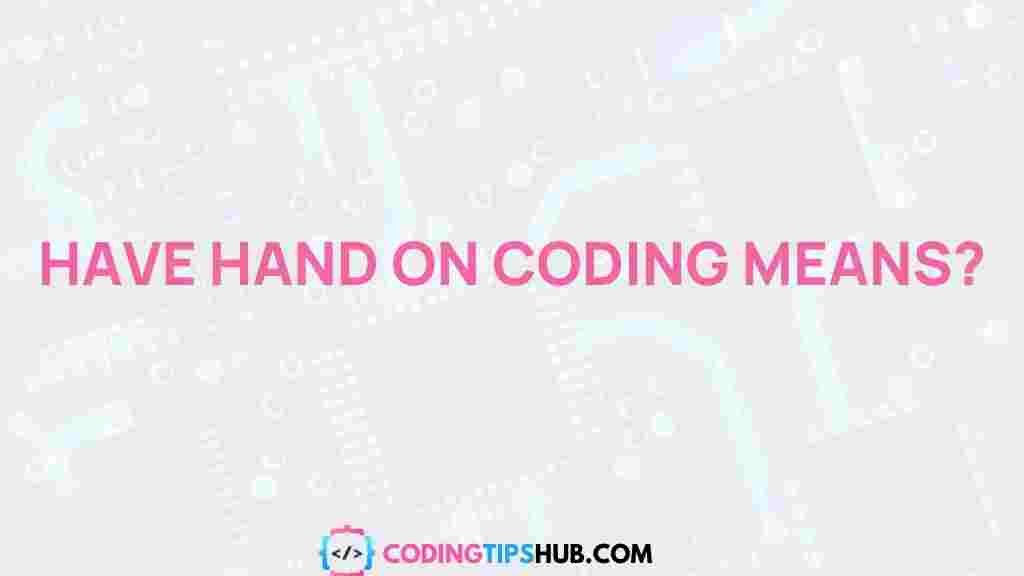Coding: The Key to Unlocking Your Tech Potential
Coding is no longer just a skill for computer scientists or developers; it has become an essential tool for problem-solving, creativity, and innovation in various industries. Whether you’re just beginning your journey into programming or looking to enhance your existing skills, understanding the foundations of coding is crucial. In this article, we will delve into the secrets of coding mastery, providing you with a step-by-step guide to becoming proficient in this vital skill.
Understanding the Basics of Coding
Coding, also referred to as programming, is the process of writing instructions that a computer can follow to perform specific tasks. These instructions are written in various programming languages, each with its syntax and rules. The first step towards coding mastery is familiarizing yourself with the foundational concepts and languages.
- Languages: Some of the most popular coding languages include Python, JavaScript, Java, and C++. Each language has unique features, but they all share basic principles.
- Syntax: Syntax is the set of rules that defines the structure of valid statements in a programming language. Learning syntax is essential for writing functional code.
- Algorithms: Algorithms are step-by-step instructions that tell the computer how to solve a problem. Mastery of algorithms is a key aspect of coding efficiency.
Step-by-Step Process to Master Coding
Becoming proficient at coding requires practice, patience, and a structured approach. Here’s a step-by-step process you can follow:
1. Choose the Right Language for You
Starting with the right programming language is essential. Beginners often find Python to be an ideal starting point due to its simple syntax and versatility. If you are interested in web development, JavaScript is a great language to learn. However, the best language for you will depend on your goals and the projects you want to work on.
2. Learn the Fundamentals of Programming
Once you’ve chosen a language, it’s time to learn the fundamentals. These include:
- Variables: Used to store data that can be manipulated within your program.
- Loops: Repeatedly execute a block of code.
- Conditional Statements: Allow your program to make decisions based on certain conditions (e.g., if-else statements).
- Functions: Help you organize code into reusable blocks.
Understanding these concepts will form the foundation of your coding knowledge, which you can build upon as you progress.
3. Start with Simple Projects
Once you’re comfortable with the basics, it’s time to start coding small projects. This could be as simple as building a calculator, a to-do list app, or a basic website. The goal is to apply what you’ve learned in a practical way, which will help reinforce your knowledge and skills.
4. Practice, Practice, Practice
The key to becoming proficient in coding is consistent practice. Try coding every day, even if it’s just for a short time. Websites like Codecademy and freeCodeCamp offer interactive coding exercises that can help you practice coding in real-world scenarios.
5. Join the Coding Community
Learning to code can feel isolating at times, but it doesn’t have to be. Joining a coding community can provide you with support, feedback, and motivation. Platforms like Stack Overflow and Reddit’s programming communities are great places to ask questions and share your progress.
Common Challenges and How to Overcome Them
While learning to code is exciting, it also comes with its own set of challenges. Here are some common obstacles and tips for overcoming them:
1. Debugging Issues
Debugging is an integral part of coding, but it can be frustrating. If your code doesn’t work as expected, don’t panic. Break down the code into smaller sections and test each part to identify where things are going wrong. Use print statements or debugging tools within your development environment to track the flow of your program.
2. Understanding Complex Concepts
Certain topics in coding, such as recursion, object-oriented programming, or data structures, can be difficult to grasp. If you find yourself struggling with these concepts, try to find alternative resources, such as YouTube tutorials or online courses, that explain the topics in a different way. Sometimes hearing a new explanation can make all the difference.
3. Avoiding Burnout
Learning to code can be mentally taxing, especially if you’re tackling difficult concepts or bugs. It’s important to take regular breaks and not overexert yourself. Set small, achievable goals for each coding session, and don’t be afraid to step away and come back with a fresh perspective.
Advanced Tips for Coding Mastery
Once you’ve mastered the basics, it’s time to refine your skills and aim for more advanced coding techniques. Here are some tips to help you continue progressing:
- Learn Data Structures and Algorithms: Understanding data structures such as arrays, linked lists, and trees, along with algorithms like quicksort and binary search, will improve the efficiency of your code.
- Contribute to Open Source: Working on open-source projects is an excellent way to collaborate with others and gain real-world experience.
- Learn Version Control: Tools like Git are essential for managing changes in your code and collaborating with others.
- Keep Up with Industry Trends: The tech industry evolves rapidly, so staying updated with new programming languages, tools, and frameworks will keep your skills sharp.
Conclusion: Embrace the Journey of Coding Mastery
Mastering coding is a journey, not a destination. With determination, consistent practice, and a willingness to learn, you can develop the coding skills necessary to excel in the tech world. Remember, even experienced coders face challenges and make mistakes. The key is persistence and continuous improvement. Whether you’re building a career as a software developer, creating innovative products, or automating tasks, coding is an invaluable skill that opens up endless possibilities.
Start today, and take your first step toward coding mastery. You’ll be amazed at what you can achieve with a little patience and effort.
This article is in the category Guides & Tutorials and created by CodingTips Team
